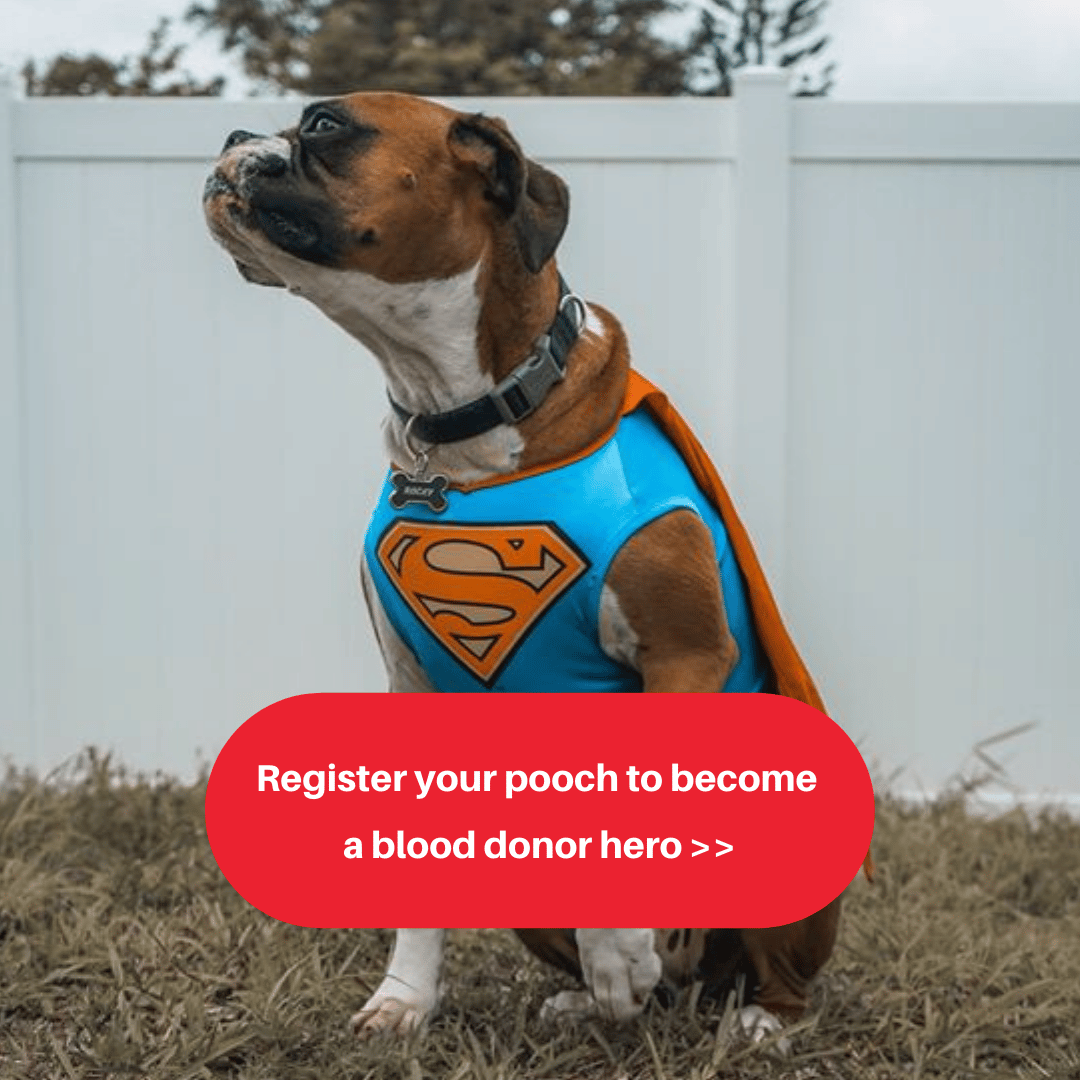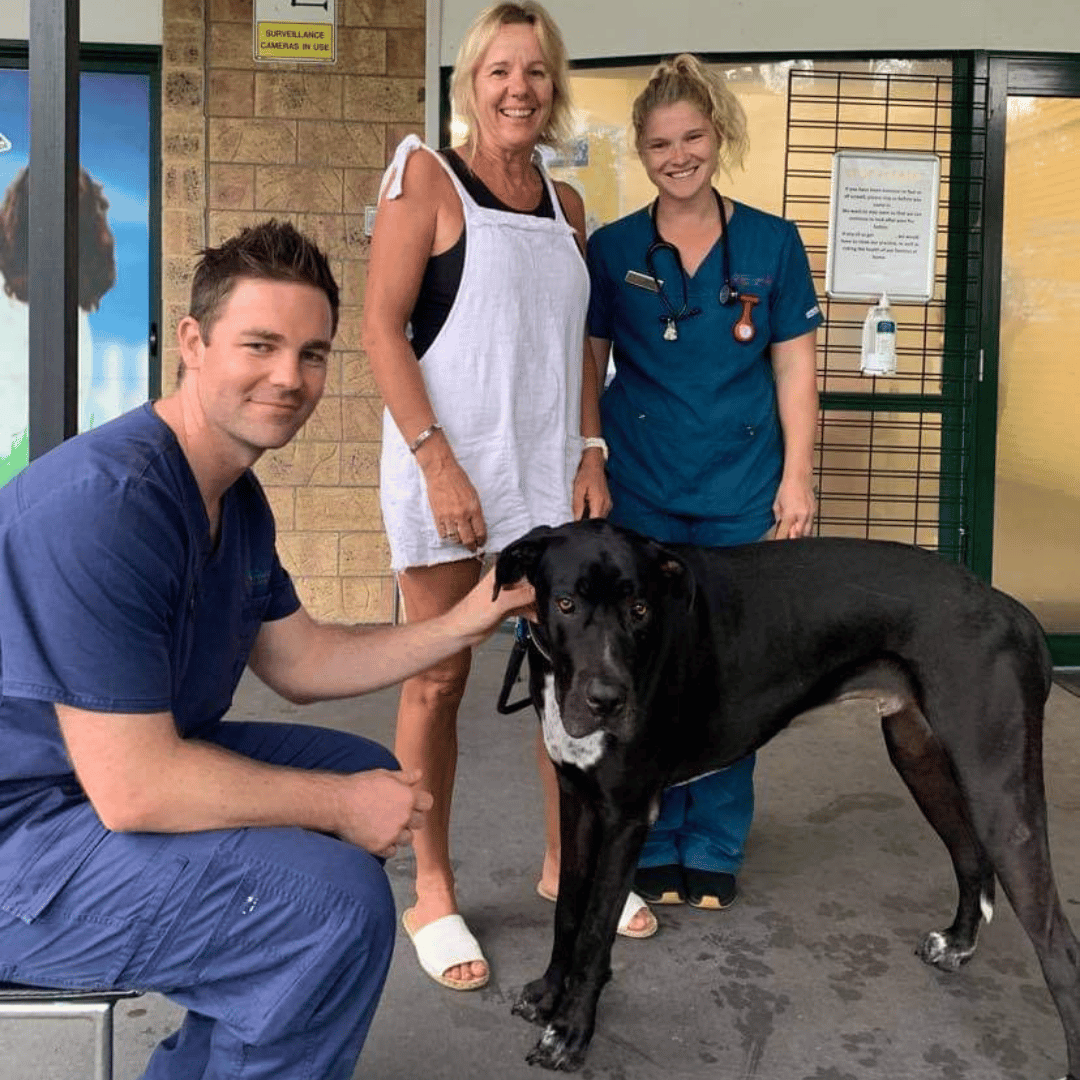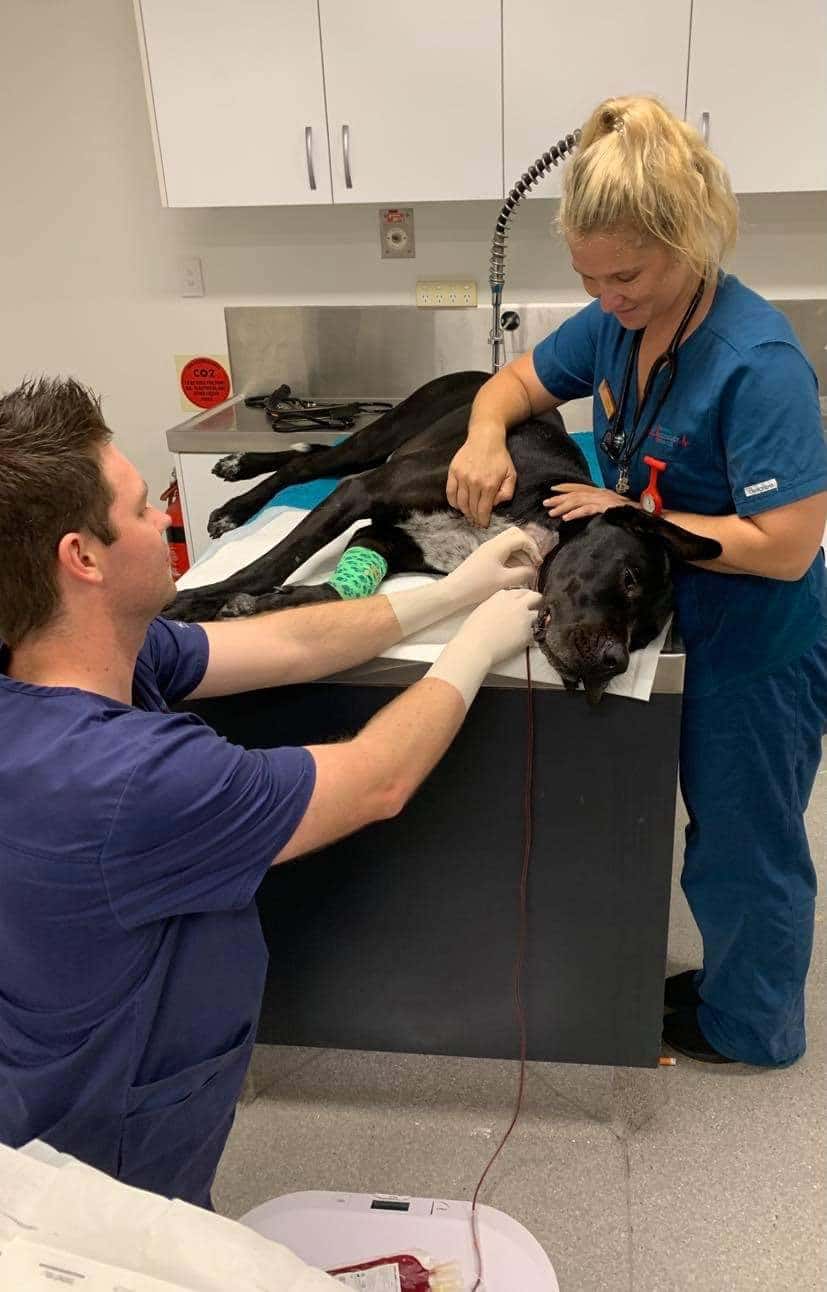Whether you are a regular blood donor, occasionally donate, or even feel queasy at just the sight of a drop of blood, you have likely heard that one blood donation can help save three lives. What many people don’t know is just like humans, our dogs are also able to donate blood and help save the lives of other dogs in need.
While it’s not a well-known fact, pet blood donations are critical and often mean the difference between life and death for sick pets, which our emergency hospitals know only too well. Could your pooch be our next blood donor hero? Are there risks involved? Why may a pet need blood? We answer those questions and more.
Can dogs be blood donors?

While Australia needs a human blood donation every 24 seconds, our veterinary hospitals see a critical need for blood donors as the shortage of suitable donors continues to grow. Our emergency hospitals have developed blood donor programs to assist with the collection and storage of these products, so they are on hand when needed.
However, due to the short lifespan of canine blood, and its importance in treating a number of ailments, we rely on the donations from our amazing canine heroes who meet the blood donation requirements to help maintain the program.
Why would a dog need a blood transfusion?
Similar to humans, sometimes our pets require life-saving blood transfusions. There are a number of reasons why a pet would require a transfusion, such as:
- Severe trauma resulting in acute blood loss, for example being hit by a car
- Blood clotting and bleeding disorders
- Toxins that cause bleeding, such as rat bait and some snake bites
- Anaemia (low red blood cell count) – most commonly immune mediated destruction of red blood cells (RBCs) or platelets (without these dogs are at risk of severe bruising and blood loss)
- Cancer
- Blood loss during surgery
Our hospitals have blood on hand at all times to provide this life-saving therapy for our patients because sometimes the difference between life and death is just minutes.
Do dogs have blood types?
Just as we have blood types, so do our dogs – in fact, dogs have over a dozen known blood types. Known as Dog Erythrocyte Antigen or DEA. The most common dog blood type is DEA 1.1. When we screen your dog’s blood we will be able to tell you what blood type they belong to based on the antigens in their blood. However, the most important information when screening blood is whether it is positive or negative.
Interestingly, some dog breeds have a predisposition to being DEA 1.1 Positive or Negative. Greyhounds, Boxers, Irish Wolfhounds, German Shepherds, Dobermans, and Pit Bulls are more likely to be Negative. On the other hand, Golden Retrievers and Labradors are more likely to be Positive.
Whether your pooch’s blood type is positive or negative, every donation makes a big difference to another dog’s life.
Is it safe for a dog to donate blood?
Our donor selection criteria and screening process ensure there is minimal risks for a dog donating blood. We use a local anaesthetic cream to minimise any discomfort. Throughout the donation process, our team monitors the donor’s welfare, and should the donor show any signs of being unsettled the donation is stopped straight away.
Most dogs experience no side effects. However, occasionally, donors may feel tired – just like humans can. If you do notice anything unusual immediately following a donation we ask you please contact our team.
It is recommended your dog takes it easy for the rest of the day and can resume normal activities the next day. We also recommend offering plenty of fresh water following their donation.
What are the canine blood donor requirements?
Did you know one in three dogs is able to donate blood?

Could your pooch have what it takes to be a blood donor? To be able to donate blood, your pooch will need to meet the following requirements:
- Healthy
- Weighs at least 25kg
- Between 1-8 years of age
- Up-to-date with vaccinations, worming, and other preventatives
- Has not had a blood transfusion previously
- Has a calm, trusting temperament
- Be capable of lying calmly for 5-10 minutes with their owner present while the donation occurs
Dogs who are confident, enjoy meeting new people, and are happy being handled make for great blood donors.
Even dogs who are extremely energetic or excitable can usually become great donors, as long as they have a reasonable level of obedience.
Dogs who are anxious, nervous, wary of new people, or have a fear of the vets, will most likely find the donation process stressful. If your pooch is one of these dogs we would encourage you to support us in other ways, like telling other pet parents about our blood bank and our need for donors or even posting about it on your social media.
How often can dogs give blood?
Dogs are able to donate blood every eight weeks. However, we manage our blood bank carefully and will only ever ask your pooch to donate when we are in need of their donation.
The health and welfare of our amazing blood donors are always our first priority. We closely monitor each of our donors through their vet health check and blood test prior to their donation to ensure their wellness.
What is the blood donation process?
There are two parts to our blood donation process. After registering your interest for your pooch to become a blood donor hero, our team will be in contact with you to arrange a meet and greet before any screening process or donation is performed.
The meet and greet
During your meet and greet session, one of our team will explain the entire blood donation process in detail to you and answer any questions you may have. This is to ensure not only if your dog is suitable but to make sure you are comfortable and happy with the process before it begins.
During the meet and greet our team will also get to know your pooch to check they are a good fit for being a donor. This is to ensure they have a calm and friendly temperament, enjoying meeting new people, are comfortable going to the clinic, and are happy with being handled. We want the experience to be a positive one so they will look forward to their next visit.
Our team will also carry out a:
- Complete physical examination to ensure they are fit and healthy and discuss their medical history with you
- A small blood sample will be taken to complete their full health check and to screen for any tick-borne diseases (these are becoming more common in Australia)
The donation
The actual donation process itself takes 5-10 minutes, with you and your pooch being in the hospital for approximately an hour.
If your pooch meets the requirements to become a blood donor, our team will call you to arrange a suitable time for your pooch to visit us to donate when we are in need of blood. You are able to stay with your pooch the entire time and provide support and lots of pats and encouragement (and to offer them little treats on the house!).
Your pooch’s blood donation appointment has four parts, and the process is the same each time they donate:
Welcome. On arrival at our hospital, our team will meet you and take you through to our donation room for your pooch to get comfortable and have a play to help them get settled.
- Pre-donation health check. One of our vets will perform a physical examination and a blood test to ensure your pooch is fit and healthy to donate on the day.
- The donation. Once our vet signs off on your pooch’s health check the donation process will start:
- Your pooch will be lifted onto the donation bed. They are able to sit or lie, but most dogs prefer to lie and often end up falling asleep.
- A small area of fur on the neck will be clipped and cleaned where the collection will be taken from.
- A local anaesthetic cream will be applied to the area.
- Blood is then collected via the large jugular vein. It will take 5-10 minutes for blood to be taken. We use the same blood collection bags as the Red Cross.
- After the collection, a bandage is placed over the collection site and we are done.
- Thank you. After their donation, your pooch will receive a lot of love from our team as well as lots of treats as our sincere thanks for their hard work.
Following your dog’s donation, we recommend they take it easy for the rest of the day before resuming their normal routine the next day.
Paisley, one of our regular blood donor heroes, takes you on her donation journey
What happens to the blood after the donation?
Following the collection, your pooch’s blood donation is then processed so as it can be used to save as many lives as possible. Each blood donation can save up to three other dog’s lives.
A donation can be used as whole blood or can be separated into different blood products. There are three main types of blood products that are used within our emergency hospitals – whole blood, packed red blood cells, and plasma. They all have their own use depending on the illness of the patient as well as having different lifespans.
Blood collected from our donors can be stored as whole blood which has the shortest lifespan of all blood products with it being up to 28 days
Collected blood can also be separated using a centrifuge into plasma and packed red blood cells. Once the red blood cells are separated they are combined with a solution to prolong the life and health of the cells, giving them a lifespan of 35 days. The plasma is separated into a storage bag and is quickly frozen giving it a lifespan of 1 year, however, it can be used up to 5 years in certain situations (for example, in cases of rodenticide toxicity).
All blood products are stored and monitored in our dedicated blood bank with continuous temperature monitoring of the fridges and freezers to ensure quality control.
If you think your dog could be our next blood donor hero, please register their details by visiting our Canine Blood Donor page.
If you suspect your dog is in pain, contact your local vet immediately or your closest Animal Emergency Service hospital.
For more information about what is and what to do in a pet emergency, visit our Pet Emergency Guide.

 Welcome. On arrival at our hospital, our team will meet you and take you through to our donation room for your pooch to get comfortable and have a play to help them get settled.
Welcome. On arrival at our hospital, our team will meet you and take you through to our donation room for your pooch to get comfortable and have a play to help them get settled.